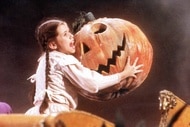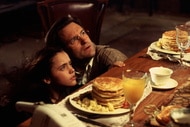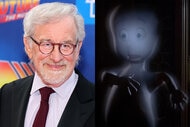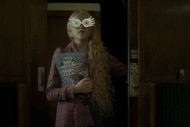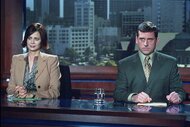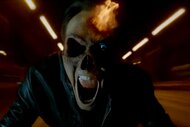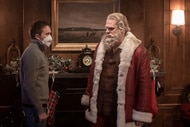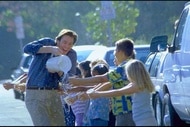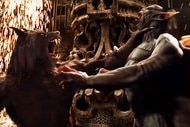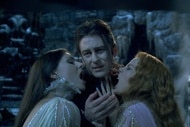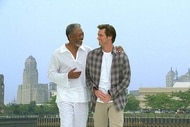Create a free profile to get unlimited access to exclusive videos, sweepstakes, and more!
Journey through Tolkien’s life and path to Middle-earth in the Morgan’s latest exhibition
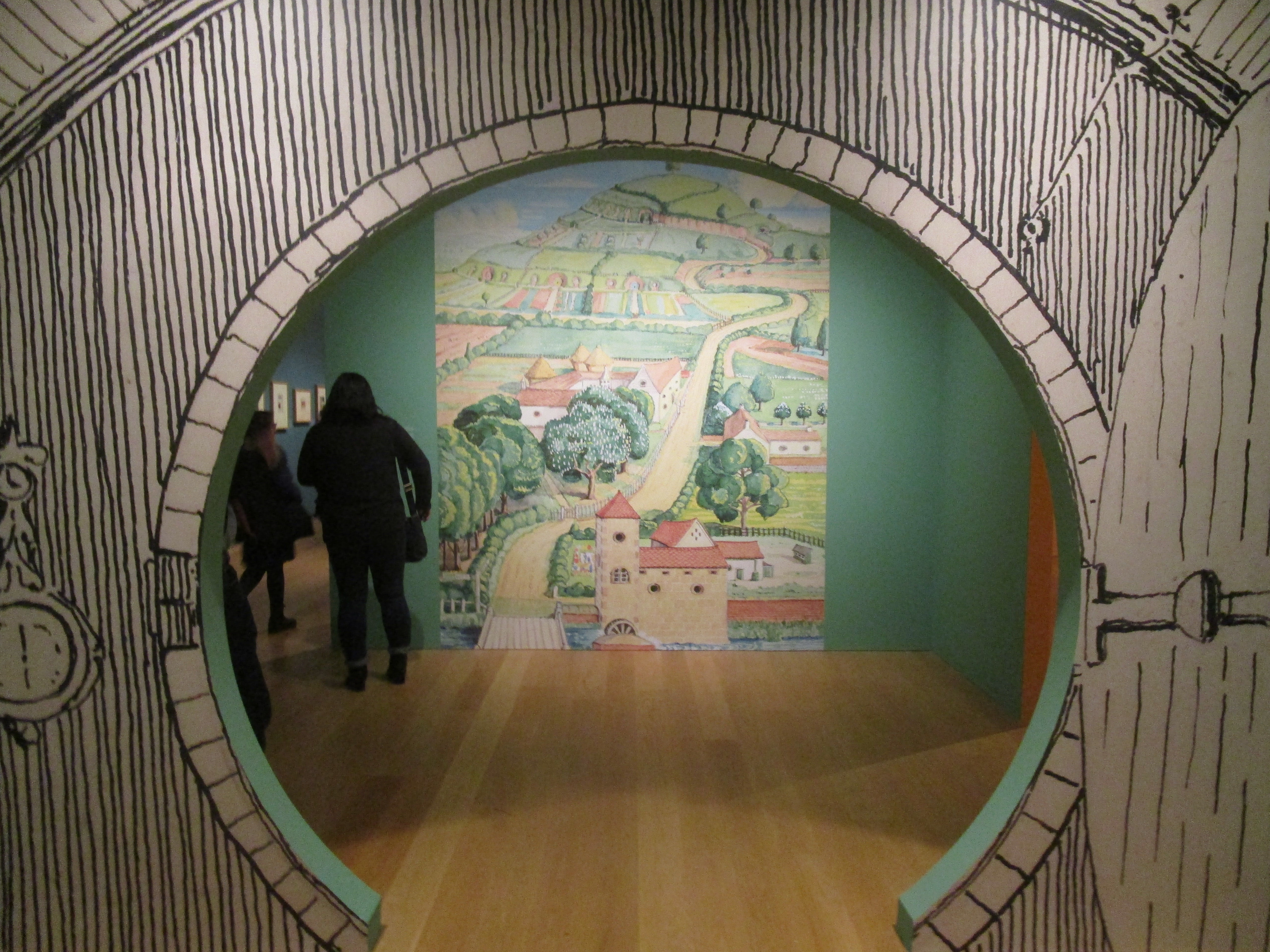
While grading some papers one summer, J.R.R. Tolkien had a sudden flash of inspiration. He found a blank exam page and began writing. The first sentence was simple enough — “In a hole in the ground lived a hobbit...” — but it was the start of something massive, the author’s journey to writing fantasy classic The Hobbit.
Even before that auspicious moment, Middle-earth had been growing in Tolkien’s mind. His experiences growing up and his life with his family all played roles in bringing this incredible world to life and now fans can see how first-hand at the Morgan Library & Museum’s Tolkien: Maker of Middle-earth exhibition.
The exhibit features photos, manuscripts, drawings, and more related to Tolkien and his work. It’s an exhibition that began at the University of Oxford’s Bodleian Library, home to the Tolkien Archive, which has much of the author’s original manuscripts and drawings. According to John McQuillen, associate curator of printed books and bindings at the Morgan, the Bodleian spent five years looking through this material to decide what to use in a Tolkien exhibit and then approached the Morgan about being the United States location for the show. McQuillen curated the Tolkien exhibit and told SYFY WIRE the two libraries have a strong working relationship, as they’ve partnered for several exhibitions in the past.
Your journey through Tolkien’s life and the creation of Middle-earth at the Morgan appropriately begins with an entrance shaped like a hobbit hole. From there, the exhibit is separated into six sections: Elvish Origins, Home & Family, Sheer Invention, The Hobbit, The Lord of the Rings, and The Silmarillion.
Elvish Origins explores Tolkien’s childhood through his time in World War I. You get a sense of his life growing up and how it influenced his work, from his mother inspiring a love for history and literature to locations and people from where he lived, which inspired hobbits. Then, Home & Family offers a look at Tolkien’s wife and children, who he originally wrote The Hobbit for. Fun highlights include the Christmas letters he wrote to his kids "from Father Christmas" each year for decades, all of which featured stories and illustrations. In some later letters, you can see hints of Middle-earth creatures like goblins creeping in as Tolkien started to work more in that world.
From there you see Sheer Invention, a section focused on Tolkien’s art. Not many people may realize just how much Tolkien drew his own images and maps that either related directly or sometimes indirectly to Middle-earth. While his drawings are scattered throughout the exhibit as well, they receive a spotlight here.
“Before a lot of his ideas for his legendarium and Middle-earth were really formed, he was doing illustrations that are very reminiscent of what would come out in the story," McQuillen explained. "Distant mountain landscapes, always images of people on a journey through a landscape, these images that clearly were in his mind but just hadn’t yet fully come into Middle-earth. You see the beginnings of that.”
The next three sections are dedicated to his major works. In The Lord of the Rings section, there’s an impressive in-world timeline with which Tolkien was keeping track of what all the characters were doing during the breaking of the fellowship. In The Silmarillion, there’s a wonderful tree of elven languages; and in The Hobbit, Tolkien’s stunning watercolors are hard to step away from. You have probably seen these images before, or perhaps own one yourself, but in person, they remain breathtaking. The watercolors were created for the American edition of the book and to McQuillen, reproductions don’t do them justice as the originals are still so incredibly vibrant and bright.
The fact that the exhibit ends with The Silmarillion is different from the Oxford exhibition.
“Oxford put The Silmarillion material first since it is what he worked on first and what he always considered to be his most important work, but I wanted to conclude with that because it’s kind of been for me the most important one,” McQuillen said.
Within that final section is a drawing and poem by Tolkien that McQuillen is excited for visitors to see. It’s one of his earliest ventures into Middle-earth and one of the first times he started to write down ideas.
“It’s a poem about Eärendil, who ends up being the father of Elrond, and the mystical city of the elves Valinor. It’s the first time that he kind of put pencil to paper as it were to record this," he said. "I think for a lot of people, when you see how early it is in his life — just before he joined the army and goes to battle in World War I — that this idea was already so well formed in his mind. That really is sort of the first of many of his works on Middle-earth, that is the very first thing he ever wrote or drew, and I think that’s kind of amazing to see. Rarely can you point to an artist or author’s beginning like that."
The placement of this section isn’t the only change to the exhibit since traveling across the pond. This exhibit is the largest collection of Tolkien’s material ever collected in the U.S., featuring 117 objects, but McQuillen explained there are fewer items here than in the original show due to gallery space. He cut out much of the Oxford-specific and very local materials, though he did also add two items. There’s a letter from Tolkien to a colleague at Oxford in which he states he didn’t really care for The Hobbit as a book and story. Then there’s a letter from Tolkien to author and friend Naomi Mitchison, sent when she was writing a review of The Fellowship of the Ring for a blurb on the inside flap.
“She wrote him a letter with questions about the history of the elves and some of these things. He wrote her a seven-page typed response and it helped him formulate the appendices he was working on for The Lord of the Rings,” McQuillen said. “We have his response to that because it’s one of the first times he lays out, before the appendices were published, a lot of these ideas and the backstory to Lord of the Rings.”
Each piece in these last three sections offers an incredible glimpse into what Tolkien was thinking throughout the process of creating his now-famous works. Just how popular his work has become led to some difficulty for McQuillen.
Whether or not you’re a diehard fan, it’s a treat to see so much original Tolkien material up close. You’ll feel like you’re on your own epic quest through Tolkien’s life and each part of Middle-earth, no matter your level of knowledge with his work. It’s brought together perfectly here in the small gallery space, where even on some walls Tolkien’s art is blown up to cover every inch and make it exciting to turn the next corner to discover what might be next. As you move through the sections, it’s hard not to feel, as Bilbo Baggins once said, that it’s “time for another adventure” in Tolkien’s world.
The Morgan is the only location in the U.S. where the Tolkien exhibit will be on display. It is open to the public starting Friday and runs until May 12.





